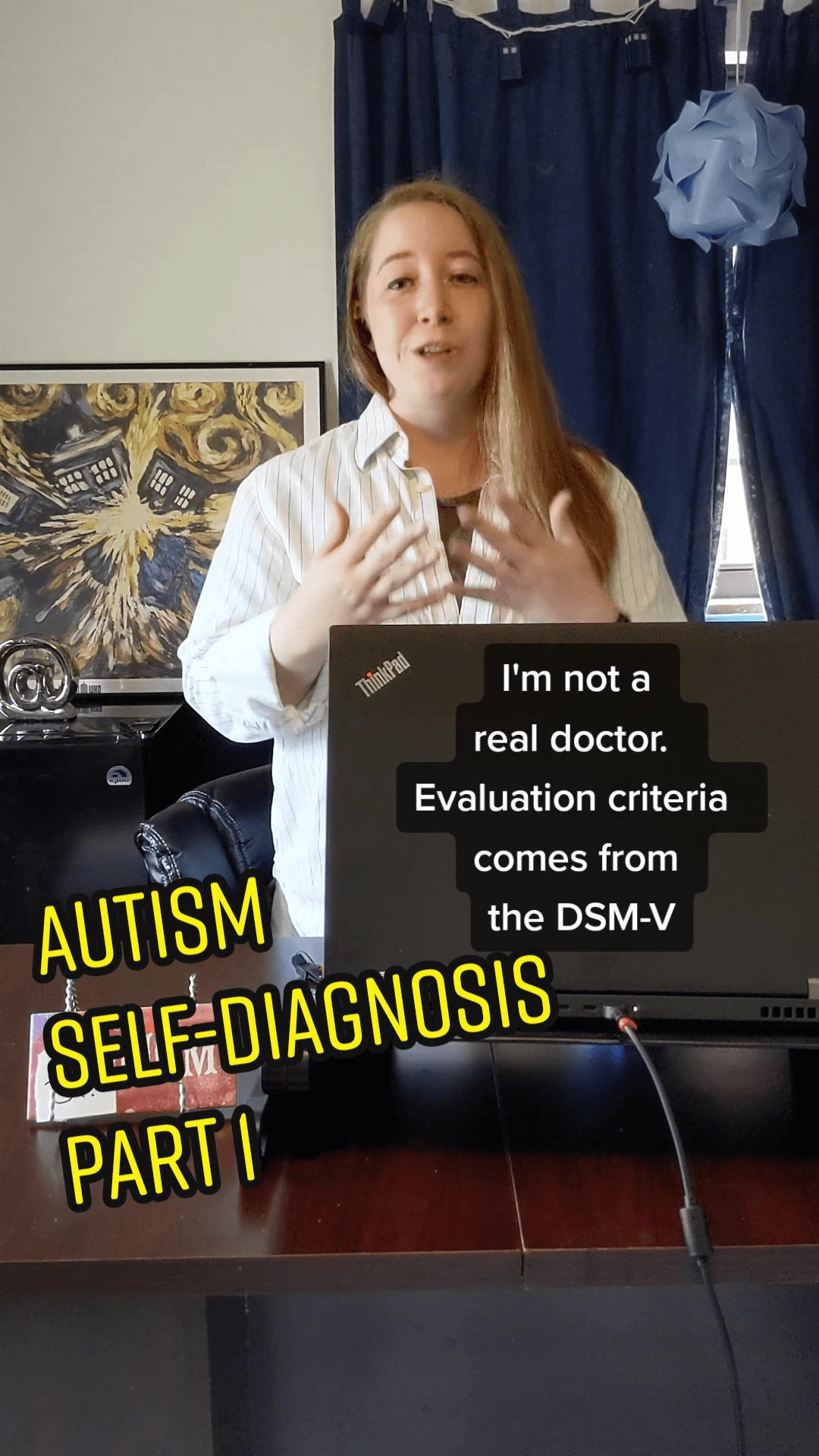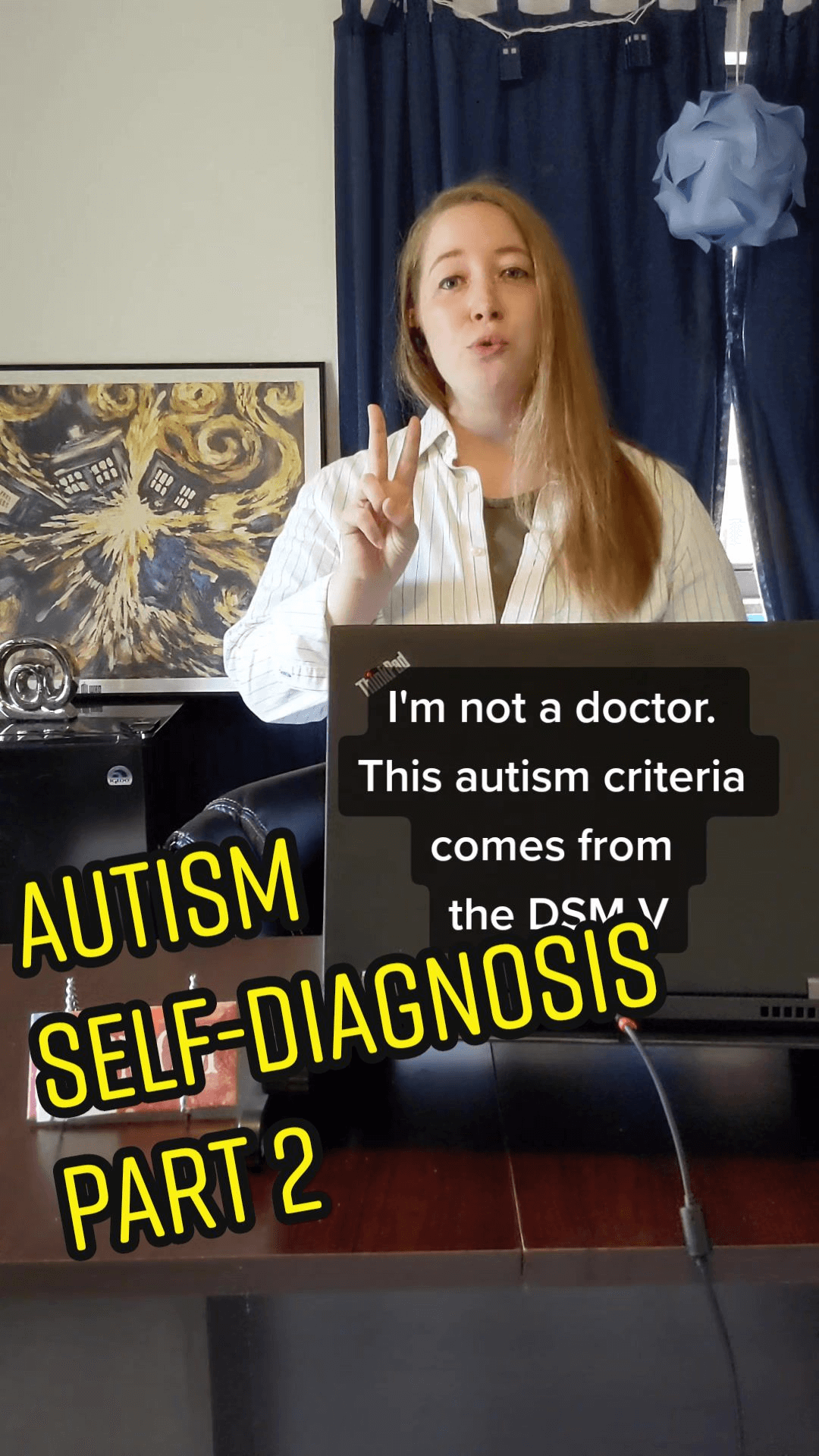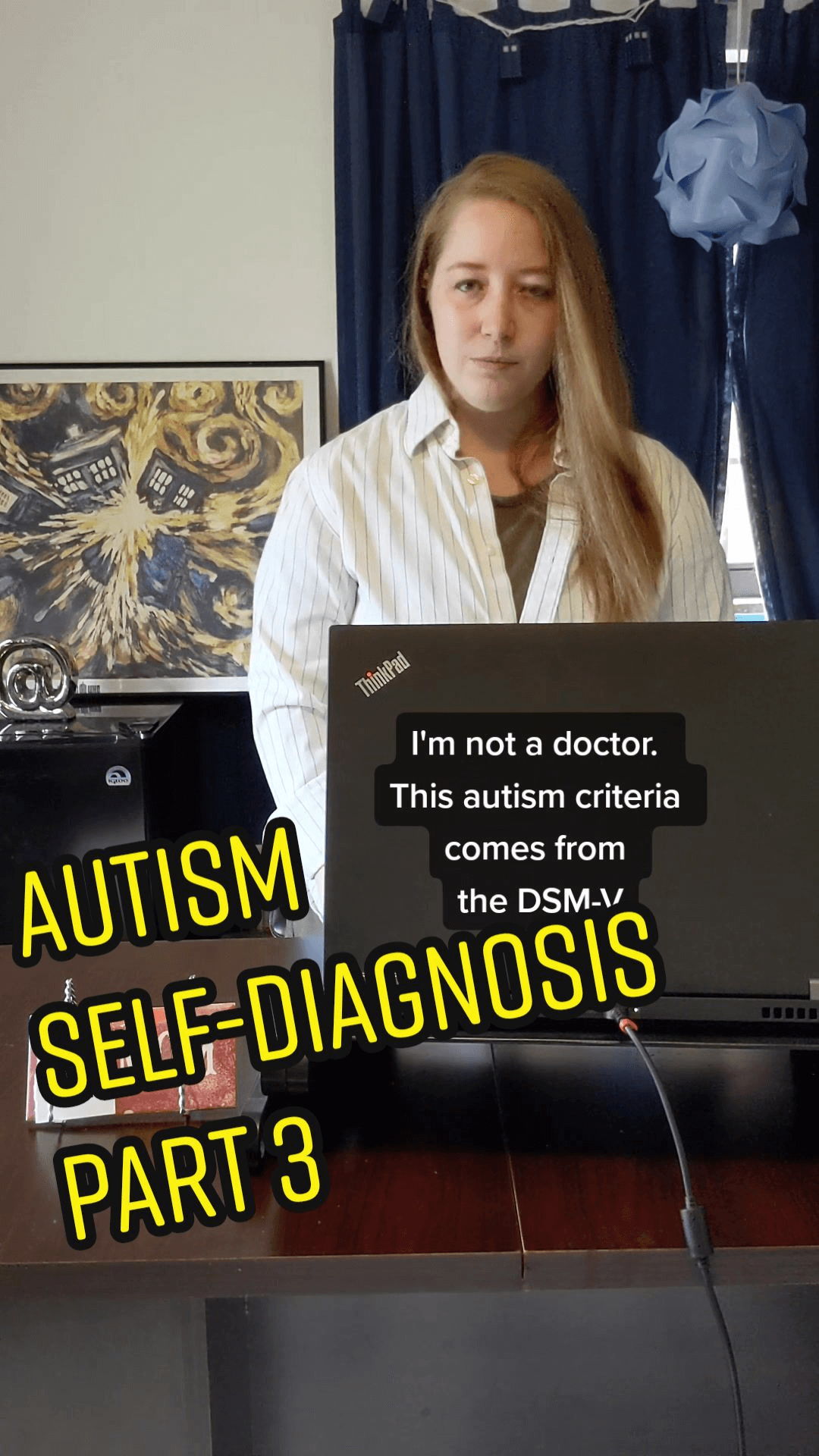This guide is a series of TikTok videos I created to help guide people through their autism self-diagnosis using the diagnostic criteria from the DSM-5. These three (3) videos are the second part of a larger series where I talk through the privilege of receiving a clinical autism diagnosis and why self-diagnosis is valid.
I am not a real doctor. Autism evaluation criteria come from the Diagnostic and Statistical Manual of Mental Disorders, 5th Edition (DSM-5).
Self-Diagnosis Part 1: ASD Diagnostic Criteria Item A

Transcript: Why hello there! I’m Dr. Mama, nice to see you. Today’s evaluation is going to be done in multiple parts. The first part we’re going to look at are the deficits in your social communication and social interaction across multiple contexts.
- Put a finger down if you have deficits in social-emotional reciprocity [examples include, but are not limited to:]
- abnormal social approach
- failure of back-and-forth conversation
- failure to initiate or respond to social interactions
- Put a finger down if you have deficits in non-speaking communication [examples include, but are not limited to:]
- abnormal eye contact or body language
- difficulty understanding and using gestures
- lack of facial expressions
- is-non-speaking
- body language/tone may not match speech
- Put a finger down if you have deficits in developing, maintaining, and understanding relationships [examples include, but are not limited to:]
- difficulties in adjusting behavior to suit various social contexts
- difficulties in sharing imaginative play
- difficulties in making friends
- an absence of interest in peers
If you have all three fingers down, you might be autistic, and if you don’t have all three fingers down, that’s okay. You might not have resonated with the definitions that I gave and therefore didn’t put a finger down because they just didn’t make sense to you. That’s why it’s important for you to do some self-awareness practices to see if you fall into any of these categories. To continue your self-evaluation, let’s head to the next video.
Self-Diagnosis Part 2: ASD Diagnostic Criteria Item B

Transcript: We’re going to now look at the next set of characteristics.
- Put a finger down if you have repetitive motor movements, use of objects, or speech [examples include, but are not limited to:]
- lining up/flipping objects
- stimming that is quick and repetitive
- echolalia or palilalia
- Put a finger down if you have an insistence on sameness [inflexible adherence to routines, or ritualized patterns of behavior. Examples include, but are not limited to:]
- extreme distress at small changes
- difficulties with transitions
- rigid thinking patterns
- need to take the same route
- need to eat the same food
- Put a finger down if you have high restricted, fixated interests that are abnormal in intensity or focus [examples include, but are not limited to:]
- strong attachment to an object, person, or place
- preoccupation with an object, person, or place
- excessively circumscribed or perseverative interests
- Put a finger down if you are either excessively [hyper-reactivity] or not excessively [hyper-reactivity] sensitive to sensory input or you have an unusual interest in sensory aspects of your environment [examples include, but are not limited to:]
- indifference to pain/temperature
- adverse response to specific sounds or textures
- excessive smelling or touching of objects
- fascination with lights or movements
If you have at least two of the four fingers down, you might be autistic. If you still think you’re autistic, let’s head into the next video.
Self-Diagnosis Part 3: ASD Diagnostic Criteria Items C, D, and E

Transcript: This part of the evaluation is where it gets messy. You may have checked all of those boxes, and that’s great, you might be autistic! For a medical professional to actually diagnose you, they have to look at the severity of each of those boxes that you checked and this is highly subjective based on the person that is evaluating you in that room.
So for each thing that you had put a finger down in those other two videos, those things have to cause clinically significant impairment in social, occupational, or other important areas of current functioning. These things also have to have been present in your early childhood but they may not have become fully manifest until social demands exceed limited capacities [basically meaning until you hit your first autistic shutdown, meltdown, or burnout] or you may have been masking them by learned strategies in later life.
Other diagnoses also have to be ruled out first, specifically, they need to rule out an intellectual developmental disorder, a global developmental delay [intellectual disabilities and autism frequently co-occur; to make a comorbid diagnosis of ASD and intellectual disability, social communication should be below that expected for general developmental level]. If you only have deficits that were in the social area but not the repetitive behavioral area, you may receive a Social (Pragmatic) Communication Disorder (SCD) instead.
So this is why it’s very important for you to be comfortable in your self-diagnosis, because if you’re comfortable stimming in front of someone—if you’re comfortable being unmasked in front of that person—you are more likely to actually receive an accurate diagnosis. If you go into that meeting and you’re masking, they’re probably not going to be able to see that especially if the individual person that is doing your evaluation can’t see through your mask.
So if you choose to receive a clinical diagnosis, good luck! And if you don’t, that’s okay. You’re still autistic with or without a label and I accept you.
